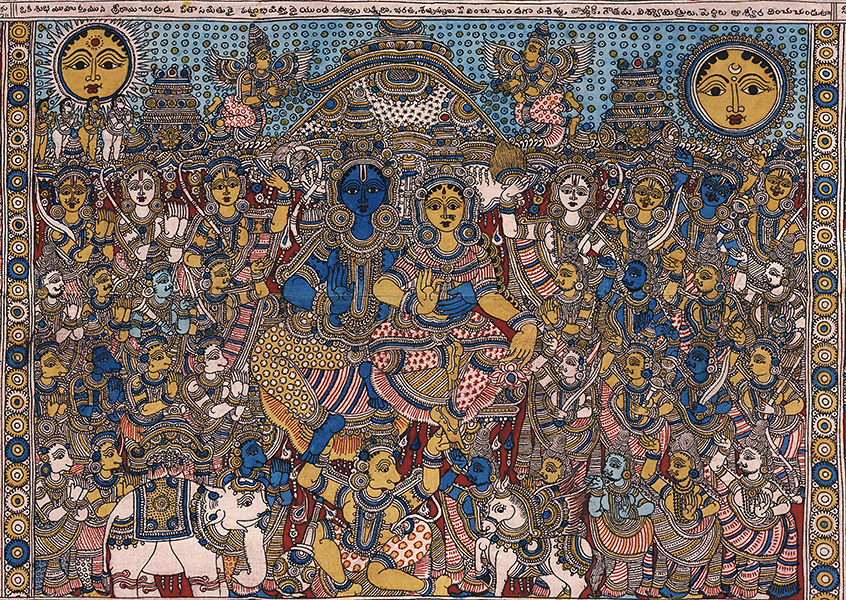Navigation auf uzh.ch
Navigation auf uzh.ch

Kalamkari (a compound noun of Persian and Indian origin, denoting a work, kari, made with a cane pen, kalam) are intensely-coloured temple cloths from South India that are produced using an elaborate process. The examples owned by the Ethnographic Museum provide a representative overview of 20th century Kalamkari art. The collection includes both textiles that were purchased in the 1920s in Tamil Nadu and several pieces which were made in Srikalahasti, an important centre for Kalamkari production in Andhra Pradesh, and brought to Zurich in 1987. The hangings are designed freehand and some are large in size. They illustrate stories of Indian deities from the Puranas and central episodes from the two epics, Ramayana and Mahabharata, in dense compositions and pictorial sequences. The textiles offer a sensual experience of this rich narrative tradition. This exhibition displays many of the museum’s Kalamkari pieces for the very first time.
An English translation of the texts in the exhibition is available.
Caption: The deities Rama and Sita in the centrepiece of a Kalamkari which is based on the narrative of the Indian epic Ramayana. Artist: Sankaraiah from Srikalahasti, Andhra Pradesh, 1980s.